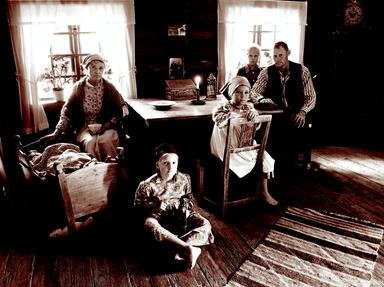Quiz Answer Key and Fun Facts
1. Who shot President James Garfield in 1881?
2. The 'Monroe Doctrine' proclaimed, 'The American continents ... are henceforth not to be considered as subjects for future colonization by any European powers.' Who played the most important role in the wording of the 'Monroe Doctrine?'
3. Who declared war on the U.S. in 1801?
4. What political party formed in 1834 from anti-Andrew Jackson forces?
5. In 1842, P.T. Barnum opened his American Museum in New York City and immediately became famous for his extravagant advertising and his exhibits of freaks, including 'Gen. Tom Thumb' and the original Siamese Twins. What year did he open his famous circus, 'The Greatest Show on Earth?'
6. Abolitionist John Brown and 21 followers raided Harper's Ferry in 1859. Federal troops recaptured Harper's Ferry quickly, and John Brown is convicted of treason and hung. Who was the then colonel, later general who led the U.S. Forces to re-take Harper's Ferry?
7. In the Battle of Little Bighorn (Custer's Last Stand), two tribes of Sioux Indians joined together to defeat Custer. One was led by Crazy Horse. Who led the other?
8. What opened in Manhattan in 1817 that put America on the financial map?
9. Thomas A. Edison was a genius in the practical application of scientific principles and one of the most productive inventors of his time giving us the lightbulb and the microphone among other things. What did the 'A' stand for?
10. Becoming a national monument in 1924, what was dedicated in 1886 to commemorate the American Revolution ?
11. This international organization was started in 1863 in Switzerland and was concerned with alleviating suffering and promoting public health. The American chapter was founded in 1881 by Clara Barton. What is it?
12. In 1800, the US capital moved to Washington D.C. from where?
13. What New York newspaper began publication in 1889?
14. Along with Robert Livingston, who did Thomas Jefferson send to Napoleon to inquire about purchasing the Louisiana region?
15. Who invented the steel-toothed plow in 1837?
16. Francis Scott Key wrote 'The Star-Spangled Banner' while aboard a British ship during the War of 1812. What fort were the British attacking?
17. What is now the state of Alaska was ceded to the U.S. in 1867 by what Russian ruler?
18. The first U.S. automobile race takes place on Thanksgiving Day in 1895 on a road course between Chicago and what other city?
19. The Missouri Compromise, passed by the U.S. Congress in 1820, ended the first crisis concerning the extension of slavery. Two states were admitted to the Union. One was a free state and one a slave state. What were the two states?
20. Fifteen thousand Indians remaining in Georgia are removed by federal troops in 1838 who move them 800 miles westward on what will become known as the Trail of Tears. What tribe was forced to move?
21. On July 4th, 1826 two founding fathers and former presidents die, ending the revolutionary era in America. Who were they?
22. America's first subway line opened in what city in 1897?
23. Former Vice-President Aaron Burr was tried for what crime in 1807?
24. A military hero won the presidential election in 1840 with the slogan 'Tippecanoe and Tyler Too!' Who was he?
25. What satirical author gained national recognition with 'The Celebrated Jumping Frog of Calaveras County', which he published in 1867?
Source: Author
Sprink1234
This quiz was reviewed by FunTrivia editor
Exit10 before going online.
Any errors found in FunTrivia content are routinely corrected through our feedback system.


